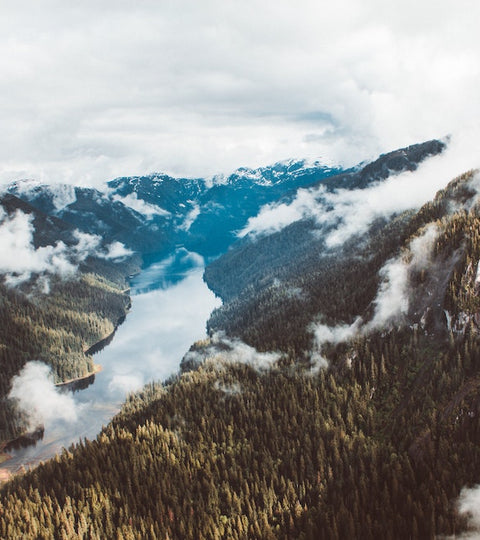How Does Altitude Affect the Flavour of Coffee?
Many factors affect how a coffee bean develops in taste. Whether it is the soil, the roast or the way it is brewed, the list is extensive. Another significant element which is essential in the development of coffee is altitude.
High and low altitudes impact the maturing process differently, which in turn affects the taste of the final product. We look at how various altitudes create a range of flavours and which locations are renowned for such flavours.
If you are an avid traveller and are excited by the places we feature in our blog, you may be interested in our range of transportable coffee products, including our travel coffee maker!

High Altitude
In general, coffee beans grown at a higher altitude tend to produce rich and distinct flavours.
An Extended Maturation Process
A higher altitude provides cooler temperatures that suspend the length of growth time of the coffee plant.
Coffee bean flavours are reliant on the length of the maturation process. The extended growth period of the coffee plant creates deeper flavours due to the more complex sugar formation of the prolonged maturation process.

Harder Beans
As a result of an extended process of maturation, coffee beans in higher altitudes tend to preserve their flavour for a lengthier time while in storage in comparison to beans grown at a lower altitude. This tends to be down to the prolonged development process, creating a harder and denser bean.
Furthermore, regional flavours into the bean are installed into the bean when grown in higher altitudes with a more extended maturation.
Locations
Countries where coffee tends to be grown at very high altitude, include:
• Columbia
• Ethiopia
• Guatemala
• Kenya
• Papua New Guinea
• Sulawesi
Beans produced at a high altitude can be found in the countries:
• Costa Rica
• Java
• Nicaragua
• Mexico Altura
• Sumatra

Low Altitude
On the other hand, milder and a reduced acidic taste can be found in beans which are grown at a lower altitude.
Provides Higher Yields
At low altitudes, the growth time of the coffee bean is faster than those in higher altitudes. As a result, beans ripen faster and are produced at a quicker rate.
Softer Beans
Low altitude coffee beans are treated differently to those grown in a higher altitude.
The beans tend to be softer, as a consequence of their speedy development process. As a result, they are not suited to darker roasts as they aren’t as robust.
Instead, beans grown at a low altitude need to be lightly roasted. They provide a more ‘earthy’ flavour and tend to be grainy in texture. Robusta coffee tends to be grown at low altitude.
Locations
Coffee beans grown at a medium altitude can be found in the countries:
• Brazil
• Bouma
• Santos
Countries where coffee is often grown at low altitude, include:
• Hawaii
Flavour Profiles
Discover the flavour profiles belonging to different altitudes in our guide below! Of course, it is essential to remember that other factors in the growing process will also affect the taste of the coffee bean.

What flavours do prefer from your coffee and why? Share your preference with us on our social media channels!


0 Comments
There are not comments yet. Be the first one to post one!